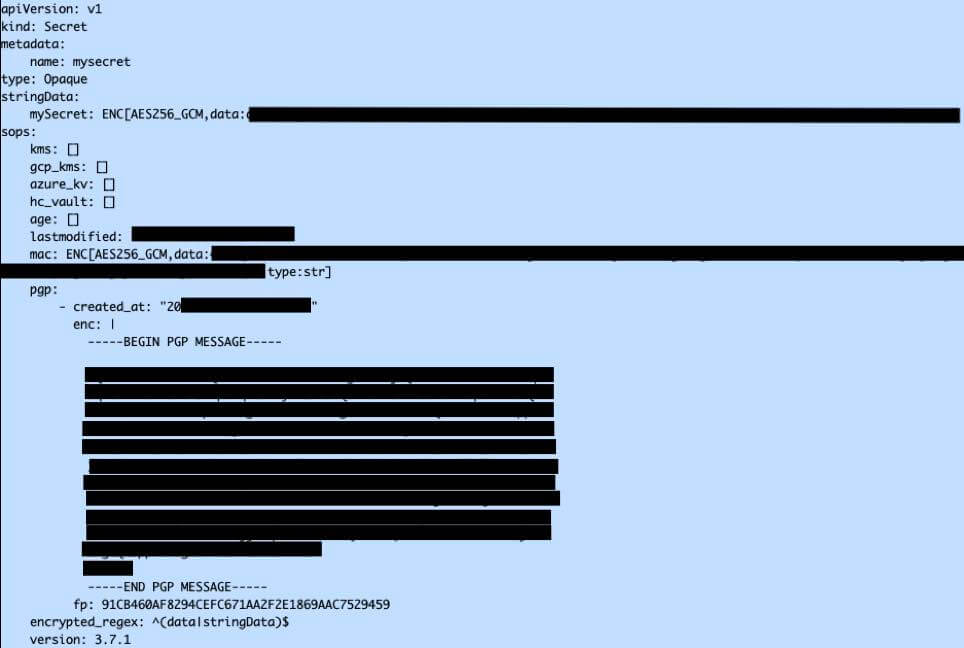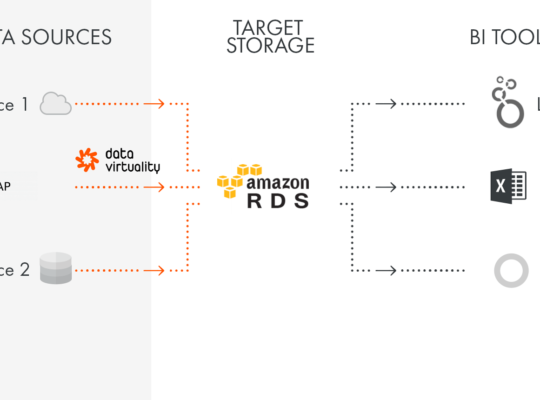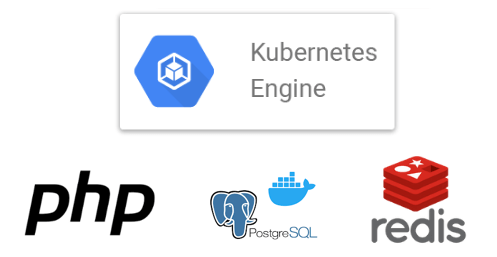The goal of this article is an example of the benefits of the GitOPS tools like FluxCD, EKS, SOPS, KMS.
How Setup a next-gen Kubernetes deployment depicting your current technology.
https://github.com/garanet/gitops-flux-helm-k8s-sops
A GitOPS example with Flux, Kubernetes, Gitlab and sops

The tools used for this example are:
- K8s cluster = Docker-Desktop (locally) – EKS (desirable).
- GITLAB = Gitlab Enterprise Trial (SaaS) – Enterprise version (desirable).
- FluxCD = Flux bootstrap to orchestrate the deployments.
- LENS / Terminal = IDE to see the cluster’s status/metrics.
For a Local Test, we assume a scenario with two clusters: staging and production.
Prerequisites
- Kubernetes cluster in this case you can use the Docker-Desktop instead of an AWS EKS.
- Kubectl installed on your machine.
- FluxCD installed on your machine.
- A Gitlab repos with a personal token auth.
Repository structure
The Gitlab repository contains the following top directories:
- infrastructure contains common infra tools such as ingress controller, storage drivers, etcd and Helm repository definitions.
- microservices contains Helm releases (applications) with a custom configuration per cluster (production/staging)
- clusters contains the Flux configuration per cluster (production/staging)
- secrets contains the encrypted security-config or configmap per cluster (production/staging)
|── clusters | ├── production | └── staging |── infrastructure | ├── base | ├── production | └── staging |── microservices | ├── base | ├── production | └── staging |── secrets | ├── production | └── staging
The Architecture
After the main GitLab folders structure has been made, we need to create the Kustomization files and the most important one is the helmrepositories folder.
In order to test the podinfo app, it requires an NGINX and a REDIS deployment.
Inside the ./infrastructure/base/ the structure will be:
|── helmrepositories
| ├── kustomization.yaml
| ├── bitnami.yaml
| └── podinfo.yaml
|── redis
| ├── kustomization.yaml
| ├── namespace.yaml
| └── redis-release.yaml
|── nginx
├── kustomization.yaml
├── namespace.yaml
└── nginx-release.yamlNow we need to define the NGINX and REDIS values for the application or the deployment itself, like persistent volumes, env variables.
Inside the ./infrastructure/production or ./infrastructure/staging the structure will be:
|── production | ├── kustomization.yaml | ├── nginx-values.yaml | └── redis-values.yaml |── staging | ├── kustomization.yaml | ├── nginx-values.yaml | └── redis-values.yaml
The microservices
It is the same logic of the infrastructure folder where the base contains the main helm deployment, and inside the folders production and staging the patch values for the helm deployment, in this case for the podinfo app.
Inside the ./microservices/ the structure will be:
|── base
| └── podinfo
| ├── kustomization.yaml
| ├── namespace.yaml
| └── podinfo.yaml
|── production
| ├── kustomization.yaml
| └── podinfo-values.yaml
|── staging
├── kustomization.yaml
└── podinfo-values.yaml
Bootstrap staging and production
We need to create the latest files before running the Flux bootstrap. These files help flux to retrieve the Kustomization files for each environment (production/staging).
Inside the ./clusters/ the structure will be:
|── production | ├── microservices.yaml | └── infrastructure.yaml |── staging ├── microservices.yaml └── infrastructure.yaml
Run Flux Bootstrap on production
After cloning the repo into a machine, and exporting the gitlab_token, the flux bootstrap to orchestrate the repository can be run.
flux bootstrap gitlab \ --context=production \ --owner=GITLAB_USER} \ --repository=GITLAB_REPO \ --branch=main \ --token-auth \ --path=clusters/production \ --components-extra=image-reflector-controller,image-automation-controller
The bootstrap command commits the manifests for the Flux components in clusters/production/flux-system dir and creates a deploy key with read-only access on Gitlab, so it can pull changes inside the cluster.
Check the cluster
A fast way to check the deployment/cluster is via command line:
:~# flux get helmreleases --all-namespaces or :~# kubectl get helmreleases -A
In the alternative, you can install a Kubernetes IDE, like LENS and then you’ll see the deployments:
The Resources/Metrics or the configuration like Persistent volumes/ Ingresses controller.
From the podinfo ingress controller port, in the browser, it will show the pod is working.
Encryption with SOPS
In this local POC there is not the AWS KMS (with the rotation keys) installed.
But it can be used locally with the GPG like the following example (POC).
SOPS installation:
macOS
$ brew install sops
Windows
- Go to the latest release page: https://github.com/mozilla/sops/releases/latest - Download sops-v3.5.0.exe (or whatever the latest version is) - Rename the file from sops-v3.5.0.exe to just sops.exe - Copy the file sops.exe to C:\Windows\System32. – Alternately, put the file in any directory and set the Path environment variable accordingly
GPG Configuration
Install GPG:
- Generate a new pgp key with: gpg –full-generate-key
- List of gpg keys with: gpg –list-keys
- Export private keys with: gpg -o private.key –armor –export-secret-keys email@..
- Create a file .sops.yaml at the project folder (/secrets/production/.sops.yaml).
- Import the pub keys to gitlab settings/CI/CD/Variables. (Add KEY as name and FILE as type).
- Add the new customization to flux-system.
The SOPS file looks like this:
creation_rules: - path_regex: .*.yaml pgp: XXXXXXXXXXXXXXXXXXXXXXXXXXXXXXXXXXXX encrypted_regex: ^(data|stringData)$
Encrypt & Decrypt files with SOPS:
Encryption with:
:# sops -i -e --encrypted-regex '^(data|stringData)$' /secrets/production/wordpress-sc.yaml
The file looks like:

Decryption (only the pgp allowed or AWS KMS user allowed)
:# sops -d /secrets/production/rabbitmq-sc.yaml > decrypted-rabbitmq-sc.yaml
Working with Docker image from GIT
K8s allows to manage and add an image scanner policy to get and deploy a new version of it.
Flux v2 uses the Gitops toolkit which contains many controllers and can be configured like:
- Source Controller
- Kustomize Controller
- Helm Controller
- Notification Controller
Ref: https://fluxcd.io/docs/components/
The image-reflector-controller implements the image metadata reflection controller (scans container image repositories and reflects the metadata in Kubernetes resources); this repository implements the image update, automation controller.
This is an example of configuring automation.
Going to use cuttlefacts-app because it’s minimal and easy to follow.
Going to configure where the docker builds image repos should be taken:
Created a GitRepository which will provide access to the git repository within the cluster in:
./infrastructure/base/gitrepositories/app-repo.yaml
apiVersion: source.toolkit.fluxcd.io/v1beta1
kind: GitRepository
metadata:
name: cuttlefacts-repo
namespace: flux-system
spec:
url: ssh://git@github.com/squaremo/cuttlefacts-app
interval: 1m
secretRef:
name: cuttlefacts-deploy
Created Image repository name and Policy in:
./infrastructure/base/imagerepositories/app-image.yaml
apiVersion: image.toolkit.fluxcd.io/v1alpha1 kind: ImageRepository metadata: name: app-image namespace: flux-system spec: image: cuttlefacts/cuttlefacts-app --- apiVersion: image.toolkit.fluxcd.io/v1alpha1 kind: ImagePolicy metadata: name: app-policy namespace: flux-system spec: imageRepositoryRef: name: app-image policy: semver: range: 1.0.x
Then created the deployment and the services inside:
./microservices/base/cuttlefacts/
./microservices/production/cuttlefacts/
After flux reconcile the kustomization, it will show:
NAMESPACE NAME READY MESSAGE LAST SCAN SUSPENDED flux-system imagerepository/app-image True successful scan, found 3 tags 2021-10-19T11:18:04+02:00 False
NAMESPACE NAME READY MESSAGE LATEST IMAGE flux-system imagepolicy/app-policy True Latest image tag for 'cuttlefacts/cuttlefacts-app' resolved to: 1.0.0 cuttlefacts/cuttlefacts-app:1.0.0 NAMESPACE NAME READY MESSAGE REVISION SUSPENDED flux-system gitrepository/cuttlefacts-repo
References:
GITOPS:
https://kubernetes.io/
https://fluxcd.io/docs/get-started/
https://fluxcd.io/docs/cmd/flux_bootstrap_gitlab/
https://artifacthub.io/
https://www.indellient.com/blog/what-are-the-benefits-of-gitops/
https://github.com/fluxcd/kustomize-controller
SOPS:
https://github.com/mozilla/sops
https://www.varokas.com/secrets-in-code-with-mozilla-sops/
https://dev.to/stack-labs/manage-your-secrets-in-git-with-sops-gitlab-ci-2jnd
https://dev.to/stack-labs/manage-your-secrets-in-git-with-sops-common-operations-118g
BUILDING:
https://fluxcd.io/docs/use-cases/jenkins/
https://github.com/kingdonb/jenkins-example-workflow
https://itnext.io/continuous-delivery-with-gitops-591ff031e8f9
Check also how: https://www.garanet.net/aws-protected-website-cloudfront-lambda/





